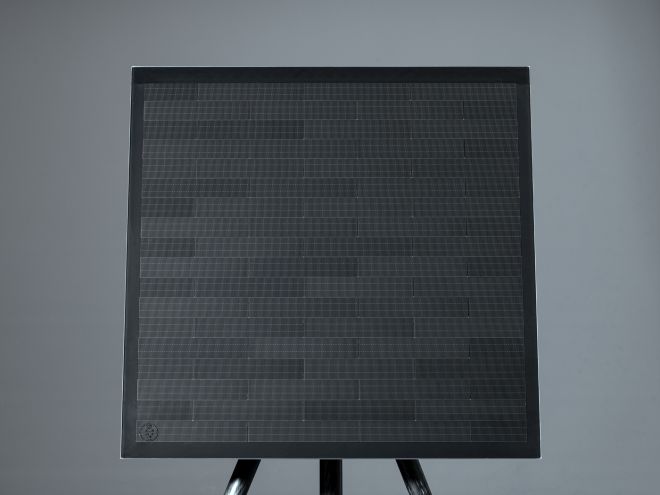SPHINX project
About SPHINX
The EU aims to be climate neutral by 2050 and all 27 EU member states have pledged to reduce greenhouse gas (GHG) emissions of 55% by 2030 (ref 1990). Immediate and strong action in all economic sectors as detailed in the EU Green Deal is required and includes generating more clean energy like photovoltaics (PV), the cheapest source of electricity, and making buildings more energy efficient whilst ensuring a just transition for all to eliminate issues related to energy poverty.
Solar PV can require significant resources (land, metals, etc.) but these resources and annual solar irradiance in Europe are limited. Buildings and infrastructure are essential as supports however not all (heritage) buildings and infrastructures can support additional PV weight. Substitution of existing materials by integrated PV is the only solution in these cases. Building Integrated PV (BIPV) can replace roofs, walls and windows, or be part of infrastructure (carports, shading, noise barriers), with a huge potential for solar as a cost-effective way of decarbonising buildings and infrastructure. Successful, acceptable BIPV adopted into the building and construction value chain means overcoming barriers: 1) Customisation of the BIPV products to specific projects (local regulations, roof typology etc) is not typical and is an over-cost compared to standard PV. Modular approaches accept architects and installers in the design process. 2) A healthy, sizeable BIPV market means convincing end-clients. Multi-functionality and added value (electricity generation + insulation or water tightness) are important selling points.

As such, the 36 months long SPHINX project’s main objective is to achieve (pre-fabricated, modular with various size) BIPV elements with the EU-based disruptive matrix shingling interconnection technology prepared via a flexible production pilot line for different sizes and combined functionality needs and allow for short construction times and low costs at the building and infrastructure locations. Therefore, the SPHINX project will develop integrated photovoltaic (IPV) products (including lightweight, semi-transparent and modular tile functionality) and new manufacturing technologies implemented at pilot lines and demonstrate these innovations in 5 demonstration sites. In addition, SPHINX aims to bring back to Europe BIPV products fabrication and full supply chain that are now done in US and China for solar tiles and lightweight semi-flexible PV modules.
Objectives
Development of technical solutions in integrated PV products for buildings and infrastructure.
Development of tools and processes for pilot line demonstration of industrialized production and prefabricated modular solutions of the SPHINX PV products made in Europe.
Integration and demonstration of the proposed IPV product solutions in the construction value chain with combined functionality and validation of their performance.
Demonstrate favourable business model case(s) for the SPHINX products.
Engagement of stakeholders and end-users including the PV and (construction and infrastructure) building industries to effectively contribute to Renovation Wave, Mission on climate-neutral and smart cities and the New European Bauhaus (NEB) initiative.
Assess and improve the environmental impact of production process, equipment and materials and increased circularity for the SPHINX IPV products.

Concept
The SPHINX project aims to bring back to Europe some products fabrication and supply chain for semi-transparent PV panels, solar roof and façade tiles and lightweight PV modules. Even if similar solar devices already exist in the market, SPHINX is addressing deeper the need for different functionalities, enhanced quality and reliability, improved aesthetic and reduced costs to facilitate their rapid acceptance in buildings and infrastructures. This will allow the development in Europe of industrialized production of customized products and of prefabricated modular solutions, allowing a smooth energy transition and maximize the energy production from available local buildings.

Approach
The figure below presents the project methodology covering the main aspects of the SPHINX value chain, from lab scale technological innovations and new process development, automation, detection, to demonstration of new products in defined demonstration sites and including the impact analysis (techno-economical, sociological, and economical aspects)The methodology of SPHINX follows four phases: Phase 1- development of the components (WP3) and the equipment (WP4) and optimise these during the WP run time and produce the required number of tiles/modules of the SPHINX products (Phase 2) based on these developed innovations to be implemented in Phase 3 in the demonstrations (WP5) and allow for the impact assessment (Phase 4) as part of the other phases in WP6. Operating strategies for after SPHINX are explored as part of (preliminary) exploitation in WP2.

Results
The SPHINX project’s main objective is to achieve (pre-fabricated, modular with various size) BIPV elements with the EU-based disruptive matrix shingling interconnection technology prepared via a flexible production pilot line for different sizes and combined functionality needs and allow for short construction times and low costs at the building and infrastructure locations. Therefore, the SPHINX project will develop integrated photovoltaic (IPV) products (including lightweight, semi-transparent and modular tile functionality) and new manufacturing technologies implemented at pilot lines and demonstrate these innovations in 5 demonstration sites. In addition, SPHINX aims to bring back to Europe BIPV products fabrication and full supply chain that are now done in US and China for solar tiles and lightweight semi-flexible PV modules.
Facts and figures
Acronym: SPHINX
Duration: 36 months
Start date: 1-11-2023
Total costs: €8,936,233
EC Funding: €5,247,990
CH Funding: €2,185,513
Publications
SPHINX is conducting research in the field of photovoltaic cells and modules, and will disseminate scientific results to peers in the field by means of scientific publications. All relevant publications will be posted on this page.

